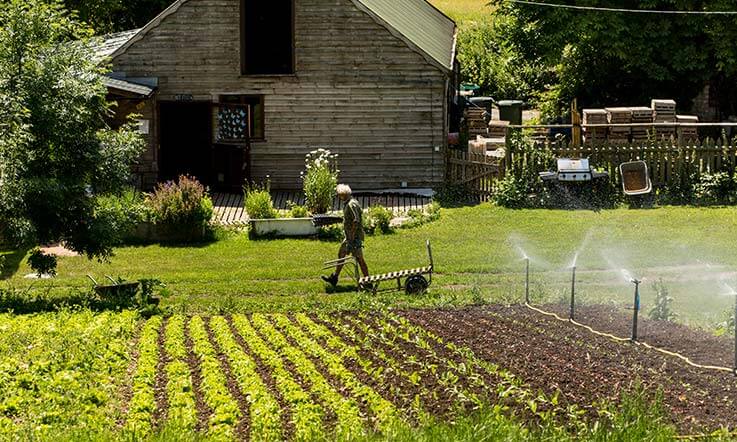A horticultural costings system fit for purpose
Posted on 27th July 2015
by organicresearchcentre
New horticultural costings tool for small-scale growers
Making financial data ‘fit for purpose’ for small-scale growers was the mission we set ourselves as part of Organic Centre Wales’s BOBL (Better Organic Business Links) project. There is an absence of tailored information on the viability and productivity of market gardens and small-scale horticultural holdings growing for supply chains in Wales (but of course not just Wales!). The problem is exacerbated by a lack of financial skills/knowledge of new entrants, for example on setting prices, estimating the cost of production and uncertainty about choosing a business model.
Features of the costings tool
- The crop is the main unit of enterprise, but crop groupings are summarised with net margins.
- One of the fundamental features of the tool is the use of m2 months. We adapted the method from Kate Collyns’ Gardening for Profit, who worked out the fixed costs of her growing space, which is apportioned to the crop grown, according to the time it is in the ground. This is important as it enables us to compare a rocket crop, which might be in the ground for less than 2 months with a purple sprouting broccoli crop, which could be growing for 11 months. We like this approach as it gives more realistic costs for short-term catch crops. We use it for allocating all costs that are not crop-specific.
- Choose the level of detail you require. If it is easiest for you just to record the costs according to crop group, e.g. brassicas, alliums, salads, cucurbits, then do that; but if you prefer to enter the detail for individual crops, you can. We recognise that some operations and costs are easier to record on a field or holding basis and divided up accordingly.
- Recording labour costs is difficult, but it is perhaps the most important for growers to get a handle on. We have different options for recording this and you should decide which works best for you. As with other costs you can record the level of detail you want. Many tasks might be non-crop specific, and these should be recorded so they can be divided up amongst crops on an area basis.
- In the tool we have chosen to allocate labour costs (total costs) according to the hours spent on that crop. This doesn’t distinguish between the cost of different labour (such as volunteer/skilled employee/own labour), but gives an indication of how labour-intensive a crop is. The tool generates a figure for average cost per hour, which could be frightening as it may appear well below minimum wage! This figure is used to allocate the costs to crop or crop group.
- Fertility-building is a very important part of organic systems and individual crop gross margins often ignore this. We list it as a crop with a negative margin and share the costs amongst the crops in the rotation. We also generate a figure to indicate the proportion of fertility-building crops in the calendar year
- The tool has a step-by-step approach, each step being a separate inter-linked worksheet. The summary sheet allows you to compare the cost of different crops and crop groups and their margins. You can then drill down into the detail to see where those costs are incurred and how your system can be improved.
The horticultural costings tool
Please download the tool and related files below. We welcome feedback for further improvement/refinement of the tool and to iron out any glitches.
